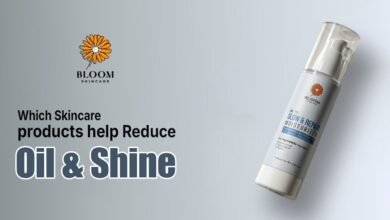
Exploring the Essential Tools in Modern Healthcare
Understanding Medical Injection Devices
Healthcare has evolved tremendously over the past decades, driven by advancements in technology, medical research, and patient care practices. One of the critical components in day-to-day medical procedures is the devices used for delivering medications directly into the body. These instruments are indispensable in clinics, hospitals, and even home care settings. Their precision, safety, and usability directly impact treatment effectiveness and patient comfort.
The Role of Injection Devices in Treatment
Injection devices are widely used for administering medications, vaccines, and other therapeutic substances. They ensure accurate dosage, reduce contamination risks, and provide efficient delivery, particularly in emergency situations. Healthcare professionals rely on these tools not only for treatment but also for diagnostic purposes, such as drawing blood samples or delivering contrast agents during imaging procedures.
See also: Fueling Fitness and Health Through Nutritional Drinks
Different Mechanisms of Syringes
A key factor in the selection of injection devices is the mechanism that governs the movement of fluids. There are devices designed for single-use, while others can be sterilized and reused. Some utilize a simple plunger system, while advanced models may include spring-assisted or automatic mechanisms for better control. Choosing the right types of syringe mechanism can affect both patient safety and procedural efficiency, making it a critical consideration in medical practice.
Common Categories in Medical Practice
Medical devices vary based on design, volume capacity, and intended application. Understanding the distinctions helps healthcare providers optimize treatment outcomes.
Standard Syringes
These are the most widely used devices for administering fluids. They typically consist of a barrel, plunger, and needle. Standard syringes are versatile and suitable for a wide range of clinical applications, from vaccinations to administering intravenous medications. Their simplicity ensures reliability and ease of use for professionals.
Insulin Syringes
Designed specifically for diabetic care, insulin syringes allow precise measurement of very small doses. Their fine needles reduce discomfort for patients, and their markings ensure accurate dosing, which is critical for maintaining proper blood sugar levels.
Tuberculin Syringes
Primarily used for skin testing and small-dose injections, tuberculin syringes offer high precision. These devices are essential in preventive healthcare and diagnostic procedures, especially for detecting conditions like tuberculosis.
Safety Syringes
Safety has become a significant concern in medical procedures. Safety syringes are designed to prevent needlestick injuries and contamination. They often feature retractable needles or protective shields that activate after use. These devices not only safeguard healthcare professionals but also minimize the risk of cross-infection among patients.
Innovations in Injection Device Design
Modern healthcare demands efficiency, precision, and safety. Manufacturers have developed devices with advanced ergonomics, auto-disable functions, and reduced waste design. Some are prefilled, minimizing preparation time and reducing the chance of dosage errors. Others are compatible with automated injection systems, allowing for more controlled and less painful administration.
Choosing the Right Device for Specific Needs
The selection of the appropriate device depends on several factors, including the type of medication, dosage requirements, patient age, and the clinical setting. For instance, pediatric patients benefit from devices with finer needles and smaller volumes, while emergency care settings may require syringes that allow rapid administration with minimal setup. Clinicians also consider sterility, ease of disposal, and compatibility with safety protocols when making a choice.
The Impact of Proper Training
Even with advanced devices, proper usage is crucial. Medical professionals must undergo training to ensure correct handling, accurate dosing, and adherence to hygiene standards. This not only enhances treatment effectiveness but also reduces the likelihood of procedural errors, infections, or other complications. Ongoing education about device innovations and best practices is essential in maintaining high standards of patient care.
Environmental Considerations
Healthcare institutions are increasingly mindful of environmental impact. Many devices are now designed for safe disposal and minimal ecological footprint. Single-use devices, while reducing infection risk, contribute to medical waste, prompting the development of biodegradable materials and recycling programs. Sustainable practices in medical device usage are becoming an integral part of healthcare planning.
Conclusion
Injection devices play a pivotal role in modern medicine, providing accuracy, safety, and efficiency in patient care. Understanding the differences, proper applications, and innovations of these tools allows healthcare providers to make informed decisions that enhance treatment outcomes. From standard models to specialized and safety-oriented devices, each type serves a specific purpose, ensuring that patients receive the care they need effectively and comfortably. As healthcare continues to evolve, the development of smarter, safer, and more sustainable devices will remain a key priority in improving global health outcomes.



